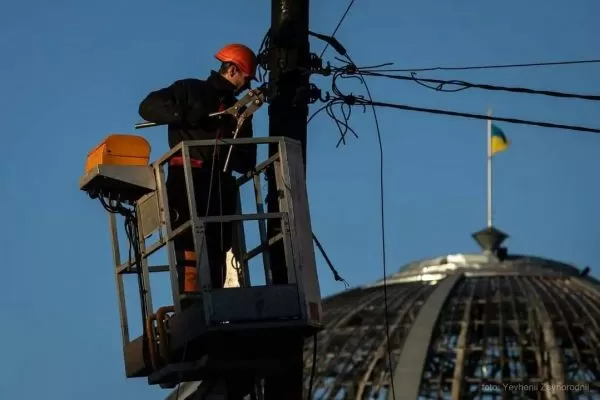As summer temperatures continue to rise, so does the demand for electricity in Ukraine. Unfortunately, this has led to ongoing power outages across the country, leaving many citizens frustrated and without access to essential services. In response to this issue, some are proposing to divide the country into zones in order to more fairly distribute electricity limits. While this may seem like a logical solution, it is important to consider the potential consequences and whether it is truly the best course of action.
The current state of electricity supply in Ukraine is a result of a combination of factors, including outdated infrastructure, mismanagement of resources, and a lack of investment in alternative energy sources. As a result, the country is struggling to meet the increasing demands for electricity, especially during peak periods. This has led to the implementation of rotating power outages, also known as “fan-shaped” or “feeder” outages, where different areas of the country are cut off from electricity at different times in order to balance the load on the power grid.
While these outages may seem unfair and inconvenient, they are a necessary measure to prevent a complete collapse of the power grid. However, as the outages continue to occur, there have been calls to divide the country into zones and allocate specific electricity limits to each zone. Proponents of this idea argue that it would ensure a fair distribution of electricity and prevent certain areas from being disproportionately affected by outages.
On the surface, this may seem like a reasonable solution. However, dividing the country into zones would not address the root causes of the electricity shortage. It would simply shift the problem from one area to another, as certain zones may still face shortages while others have excess electricity. This could also lead to conflicts and inequalities between different regions of the country.
Furthermore, dividing the country into zones would require a significant amount of time, resources, and planning. This is not a quick fix solution and could potentially worsen the current situation in the short term. It would also require a complete overhaul of the power grid and the implementation of new systems and infrastructure, which would come at a high cost. This would ultimately be passed on to the consumers, resulting in higher electricity bills for everyone.
Instead of dividing the country into zones, efforts should be focused on addressing the underlying issues and finding sustainable solutions. This includes investing in renewable energy sources, modernizing the power grid, and promoting energy efficiency. It is also crucial for the government to prioritize the needs of its citizens and ensure that electricity is accessible and affordable for all.
Moreover, the current power outages are not just an inconvenience, but a serious issue that affects the daily lives of citizens. Hospitals, schools, and businesses are all impacted by the lack of electricity, and many people are left without access to essential services such as air conditioning and refrigeration. This is not just a matter of fair distribution, but a matter of basic human rights.
In conclusion, the ongoing power outages in Ukraine are a result of deeper issues that need to be addressed. Dividing the country into zones is not a viable solution and could potentially exacerbate the problem. Instead, the focus should be on finding sustainable solutions and ensuring that electricity is accessible to all citizens. It is time for the government to take action and prioritize the well-being of its people, rather than proposing band-aid solutions that do not address the root causes of the issue. Let us work together towards a brighter and more sustainable future for Ukraine.

